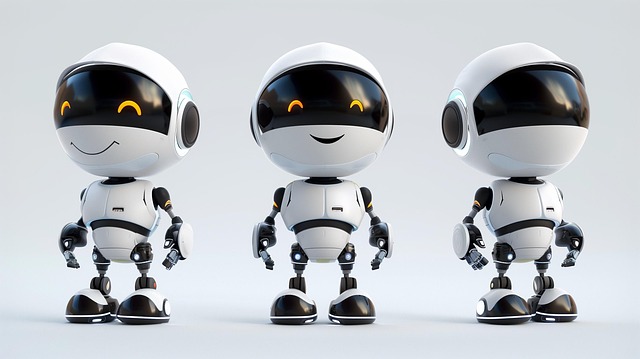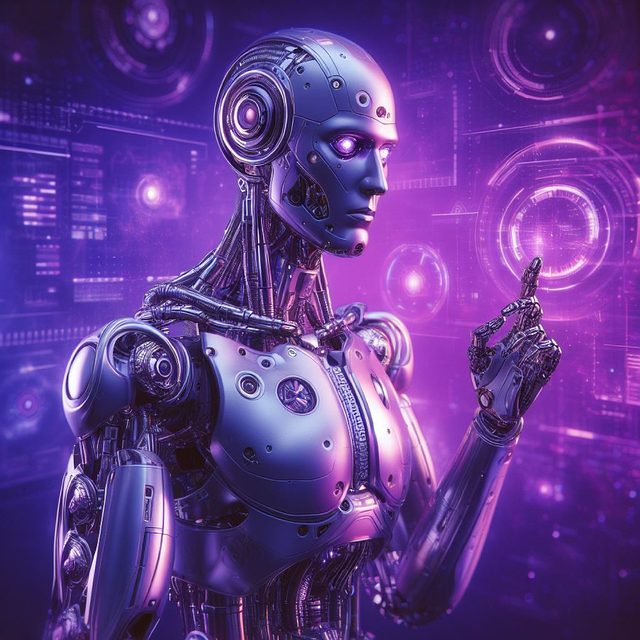Generative AI powers dynamic AI chatbots that enhance user experiences by generating creative content and personalized responses. Before development, defining purpose and scope is crucial, guiding the choice of AI technologies and target audience understanding. High-quality, diverse training data ensures robust performance across various languages and contexts. Strategic model selection, from general-purpose LLMs to domain-specific models, enhances chatbot functionality. Implementation involves choosing a framework, feeding diverse datasets, and fine-tuning for accurate conversations. Comprehensive testing, refinement, and deployment on suitable platforms ensure optimal AI chatbot performance in real-world applications.
Looking to create your own AI chatbot? This comprehensive guide walks you through every step, from understanding generative AI fundamentals to deploying a fully-functioning ochatbot. First, grasp the basics of this revolutionary technology and define your chatbot’s purpose and scope. Select high-quality training data and choose a suitable generative model for optimal performance. Implement, train, test, refine, and deploy your AI chatbot with ease. Discover expert tips and best practices to create an engaging, intelligent ochatbot that enhances user experiences.
- Understand the Basics of Generative AI
- Define Your Chatbot's Purpose and Scope
- Choose the Right Training Data
- Select a Suitable Generative Model
- Implement and Train Your Chatbot
- Test, Refine, and Deploy Your Ochatbot
Understand the Basics of Generative AI

Generative AI is a cutting-edge technology that empowers machines to create new content, such as text, images, or music, rather than simply analyzing and responding to existing data. At the heart of this process lies the use of neural networks, particularly transformer models, which learn patterns from vast datasets. These models can generate novel outputs by predicting the next word or token based on what they’ve learned.
When developing an AI chatbot, understanding generative AI becomes crucial. It allows you to design chatbots that go beyond rule-based systems and dynamic conversation flows. By leveraging generative capabilities, your chatbot can offer personalized responses, creative storytelling, or even generate unique content like poems or code snippets. This not only enhances user experience but also opens up a world of possibilities for innovative applications of AI chatbots.
Define Your Chatbot's Purpose and Scope

Before creating an AI chatbot, clearly defining its purpose and scope is essential. This involves determining what tasks or problems your chatbot will solve for users. Will it be a customer service ochatbot handling basic inquiries, or a more sophisticated tool aiding in complex decision-making processes? Defining the target audience and their needs is also crucial; this helps tailor the chatbot’s responses and interactions to be relevant and engaging.
Knowing your chatbot’s purpose guides the choice of underlying AI technologies, from natural language processing (NLP) models to machine learning algorithms. For instance, a simple ochatbot might use rule-based systems and pre-defined responses, while more advanced chatbots could leverage deep learning models like transformers for better understanding and generation of text. This step ensures that your chatbot is not only effective but also aligns with the latest advancements in AI chatbot development.
Choose the Right Training Data

When creating an AI chatbot, selecting high-quality training data is paramount to its success. The data should be diverse and representative of the conversations or tasks you expect your ochatbot to handle. This involves gathering a vast array of relevant inputs, including common user queries, industry-specific terminology, and even edge cases to ensure robustness. A well-curated dataset allows the AI model to learn and generate responses that align with human language patterns.
The quality and relevance of training data directly impact an AI chatbot’s performance. Incorporate a variety of text formats, such as questions, statements, and dialogues, to teach the model versatile response generation. Additionally, consider including cultural nuances, regional variations, and multiple languages to create a globally accessible ochatbot. Regularly updating and refining the training data is essential to keep the AI chatbot current and effective over time.
Select a Suitable Generative Model

When creating an AI chatbot, selecting a suitable generative model is a critical step that significantly impacts performance and capabilities. The choice depends on the desired functionality, such as text generation, conversation flow, or even creative writing tasks. Transformer-based models like GPT (Generative Pre-trained Transformer) are popular for their ability to understand context and generate coherent responses. These models have been fine-tuned for various applications, including customer service, content creation, and more.
For instance, an AI chatbot designed for general conversational purposes might leverage a large language model (LLM) with access to vast amounts of text data. This ensures the ochatbot can learn from diverse sources, enhancing its ability to engage in natural-sounding conversations. Conversely, a niche-specific chatbot could benefit from models tailored for medical or legal domains, ensuring accurate and relevant responses within their respective fields.
Implement and Train Your Chatbot

Once you’ve designed your AI chatbot, it’s time to bring it to life through implementation and training. This crucial phase involves setting up the chatbot platform and feeding it vast amounts of data to learn from. Start by selecting a suitable development framework or toolkit that aligns with your chatbot’s purpose and complexity. Popular choices include Dialogflow, IBM Watson Assistant, and Microsoft Bot Framework. Each offers unique features and capabilities to streamline the development process.
During training, you’ll need to feed your AI chatbot with relevant datasets containing diverse user queries and corresponding responses. The more comprehensive and varied these data sets are, the better equipped your chatbot will be to understand and generate human-like conversations. Train your model using machine learning algorithms, such as natural language processing (NLP) and deep learning techniques, allowing it to learn patterns, context, and semantics from the provided text. Regularly evaluate and fine-tune your chatbot’s performance, ensuring it consistently delivers accurate and relevant responses.
Test, Refine, and Deploy Your Ochatbot

After crafting and training your Ochatbot, it’s time to Test, Refine, and Deploy. This crucial phase ensures your AI chatbot performs optimally in real-world scenarios. Begin by conducting extensive testing to identify any glitches or inconsistencies in its responses. Use a diverse set of inputs to challenge the ochatbot, simulating various user interactions. Monitor its performance closely, noting areas where it excels and struggles.
Refinement is key. Address any issues found during testing, tweaking the model’s parameters and training data as needed. Continuously iterate this process until your AI chatbot delivers accurate, relevant, and satisfying responses. Once refined, deploy your Ochatbot to its intended platform—a website, app, or messaging service—making it accessible to users who will benefit from its capabilities.
Creating a generative AI chatbot involves understanding foundational concepts of generative AI, defining its purpose, curating high-quality training data, selecting an appropriate model, and iterative testing and refinement. By following these steps, you can develop an advanced AI chatbot like an ochatbot that delivers personalized interactions, enhances user experiences, and drives value across various applications. This process empowers businesses to leverage the potential of AI chatbots to engage with their audiences in meaningful ways.
